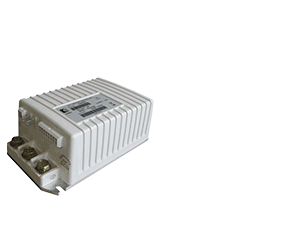Extending the service life of flooded lead-acid batteries for a golf car fleet is definitely an easy way to save money on annual operating costs. Many fleet managers diligently perform routine maintenance such as checking the battery’s water levels, cleaning terminals, and following proper charging techniques. However, many don’t realize that over time batteries can develop electrolyte stratification. Electrolyte stratification is the result of poor acid circulation that causes higher concentrated acid to fall to the bottom of the battery. This can cause poor battery performance and in extreme cases, stratification damages the bottom of the battery plates causing early battery failure.
Performing an equalization charge reduces the chance of electrolyte stratification. An equalization charge simply adds an extended high voltage charge at the end of the normal charging process. Charging the battery at a higher voltage level promotes gassing (bubbling) of the electrolyte. The bubbling “re-mixes” the acid and water and prevents stratification from occurring.
How To Perform An Equalization Charge
Many high-quality battery chargers have an equalization feature that performs this process as needed, but if your charger doesn’t have one, it’s a simple step-by-step process.
1. Make sure the battery is a flooded lead-acid type.
2. All electrical loads to the battery must be removed.
3. The process must be performed in a well ventilated area with the operator wearing protective equipment such as safety glasses and gloves.
4. Connect your charger and charge the batteries until the normal charge cycle is completed.
a.) If the charger is equipped with an automatic equalizing mode, make sure the charger is connected and powered up long enough to complete the equalization.
b.) If the charger is not equipped with an automatic equalization mode, assure the charger completes a full, automatic charge and then restart the charger by disconnecting AC power and reconnecting. The charger should restart and extend the charge time by 1-3 hours.
5. Look for gassing and bubbling of the electrolyte to ensure the process is working.
6. Using a hydrometer, take specific gravity readings every hour.
7. You will know that the equalization process is complete when the specific gravity values no longer increase during the gassing stage. If the charger terminates the charge automatically, before the hourly specific gravity readings are constant, restart the charger and continue the process until specific gravity readings are constant. Consult your battery manufacturer for fully charged specific gravity values.
8. Make sure to replace any water lost during the process.
Equalizing is just one of several procedures you should be adding to your maintenance schedule every time you service the batteries. This regular service, including watering, should be performed at least once a month or more frequently during periods of heavy use. For more information, contact U.S. Battery Manufacturing, 1675 Sampson Ave. Corona, CA 92879. (800) 695-0945. Visit: www.usbattery.com.




















